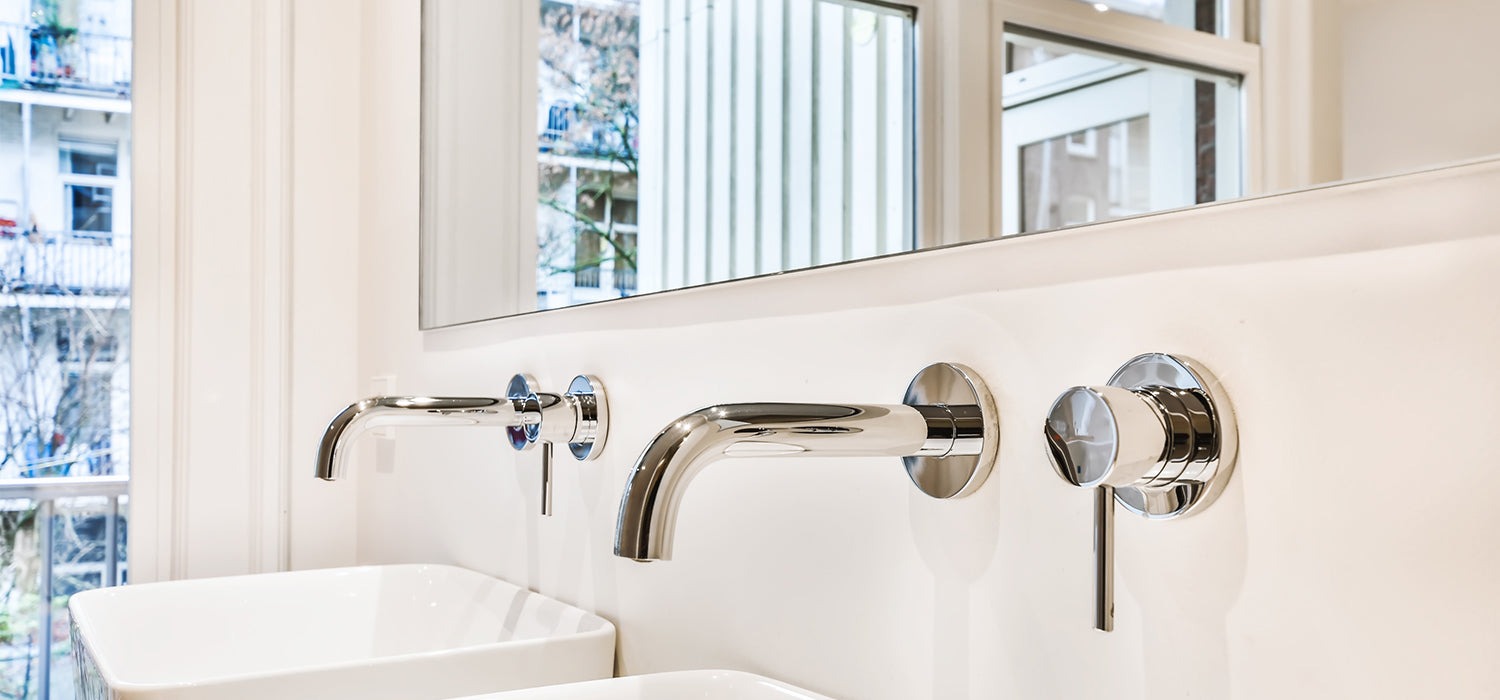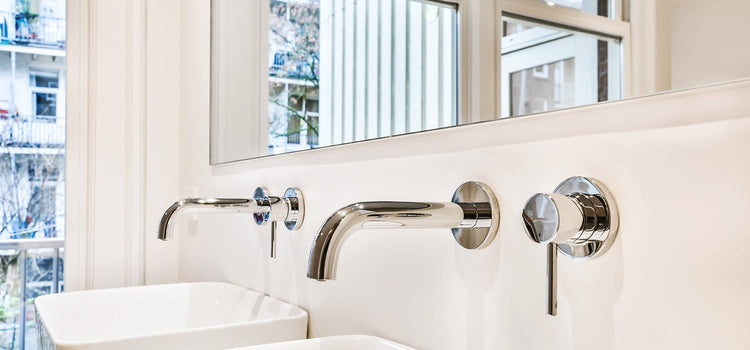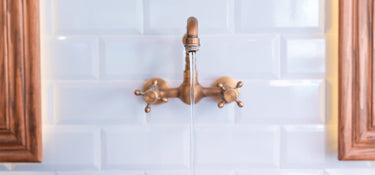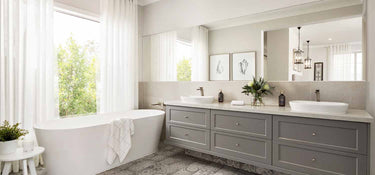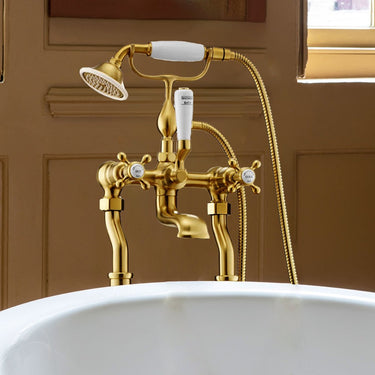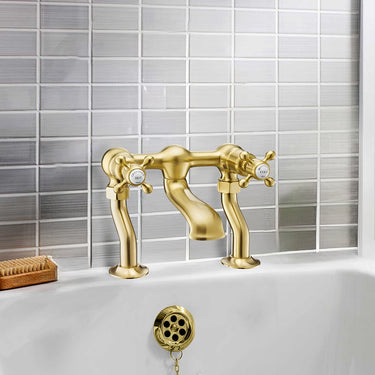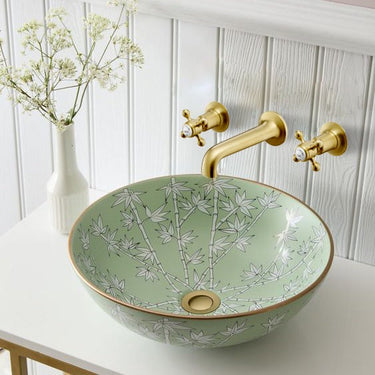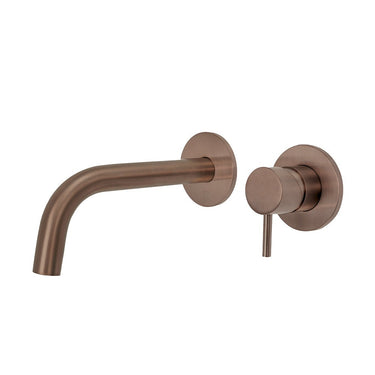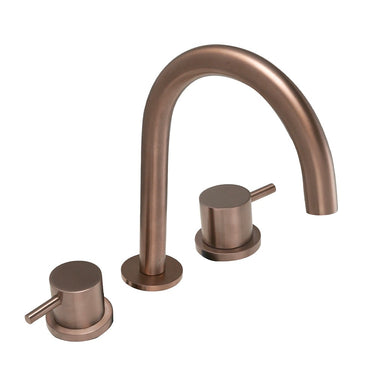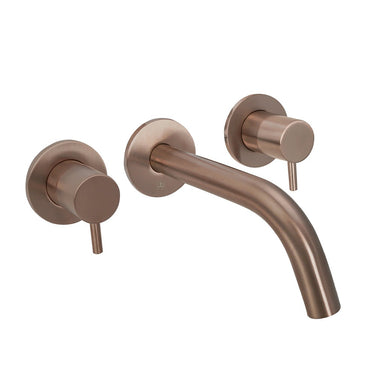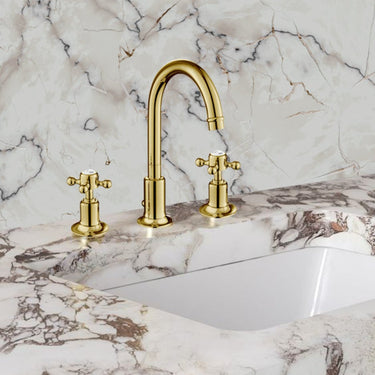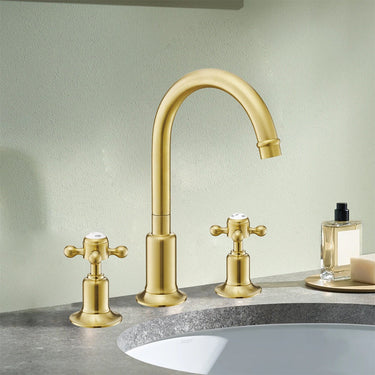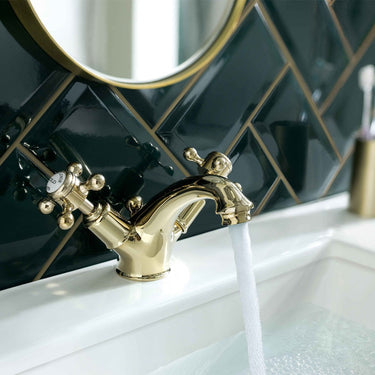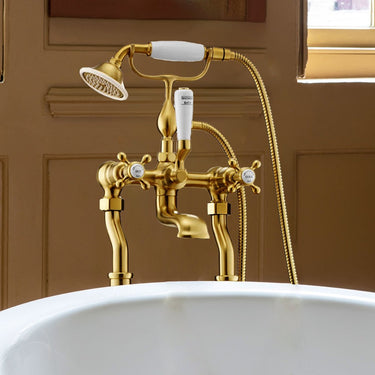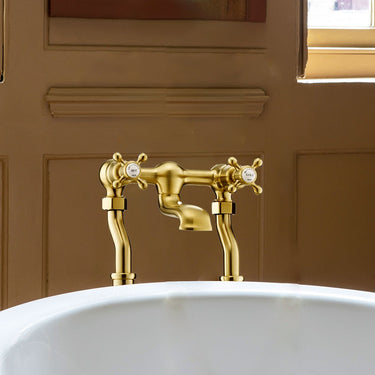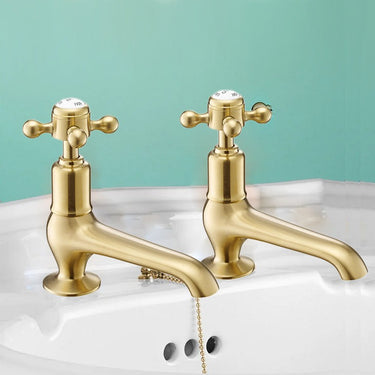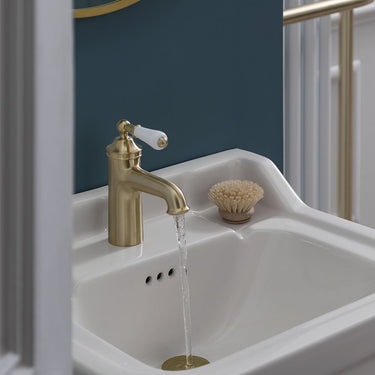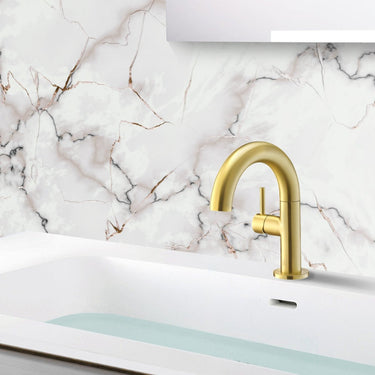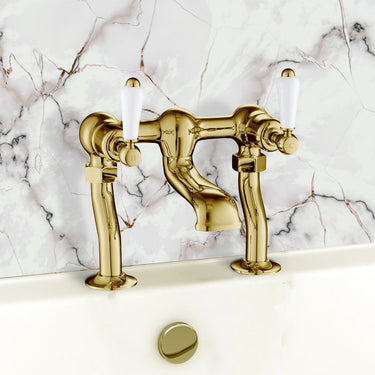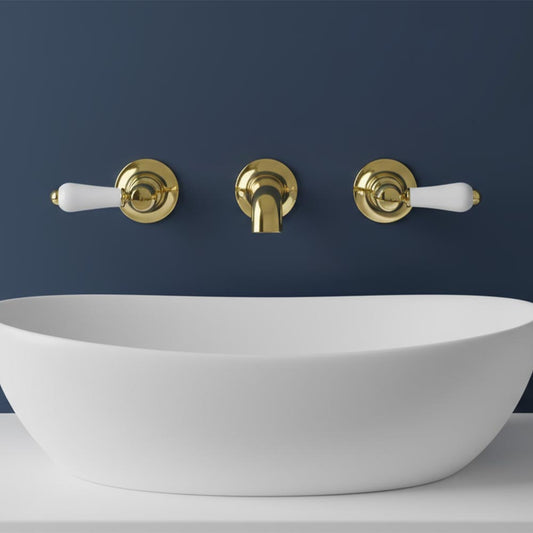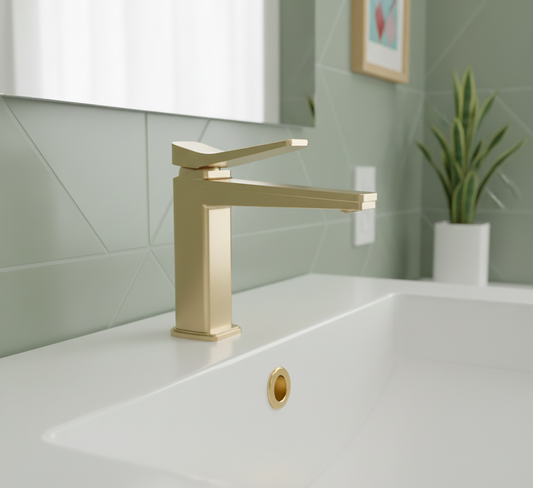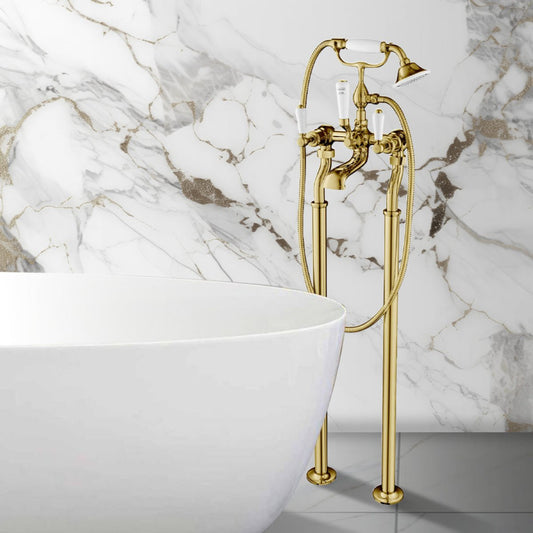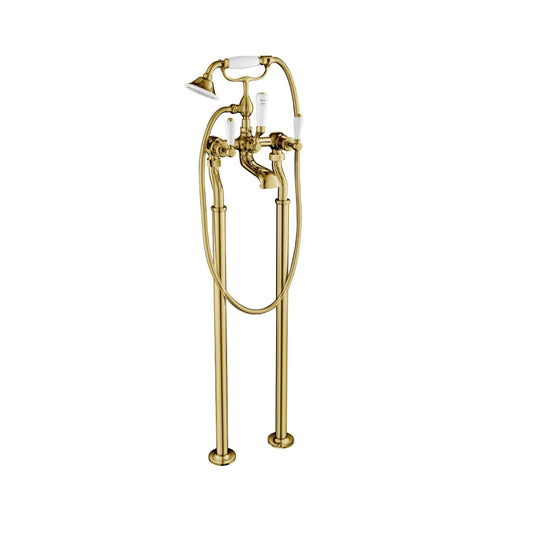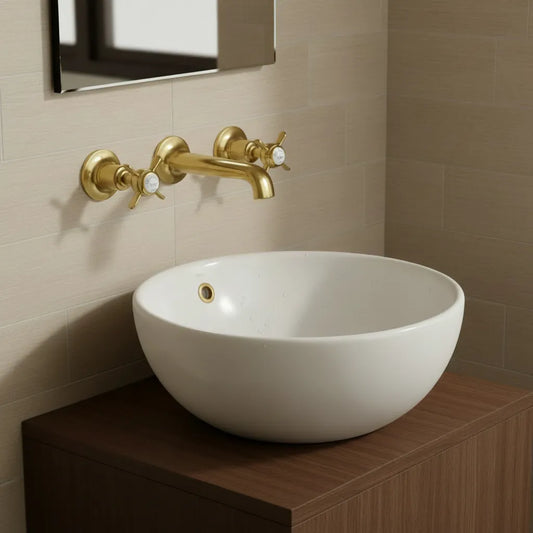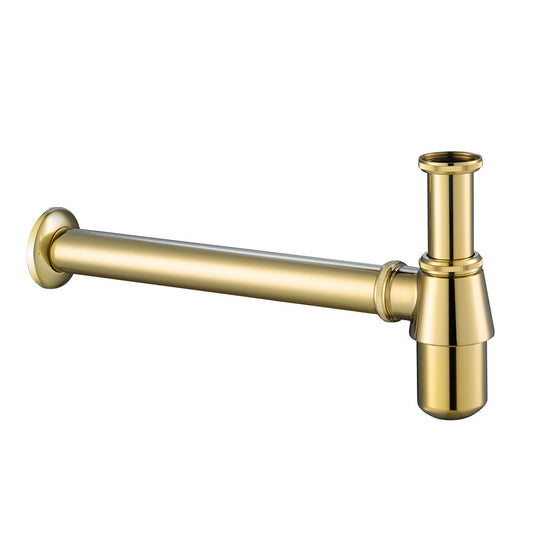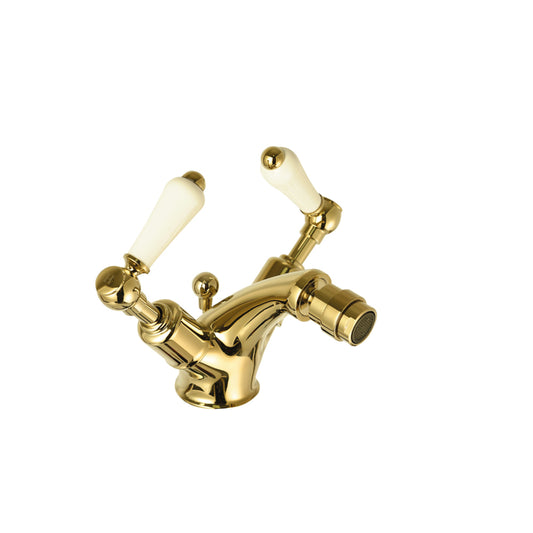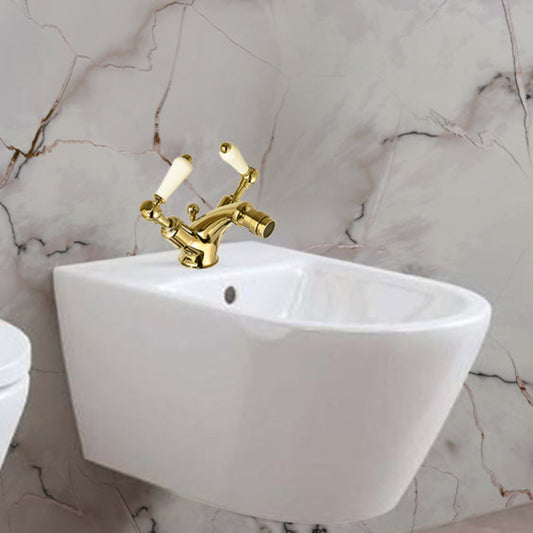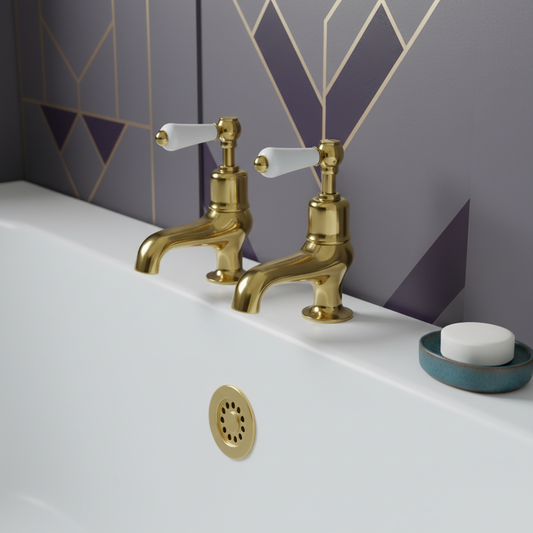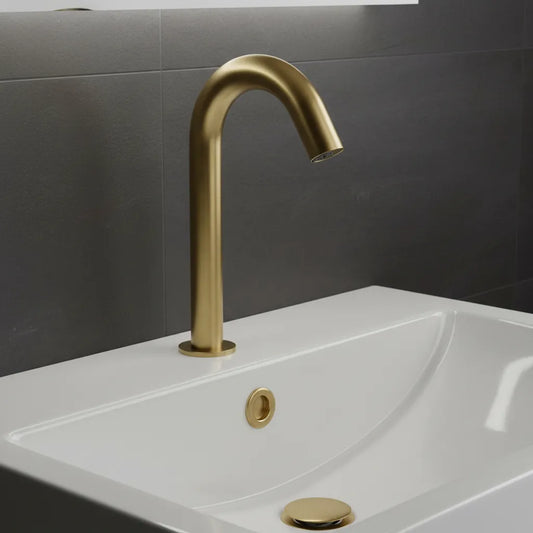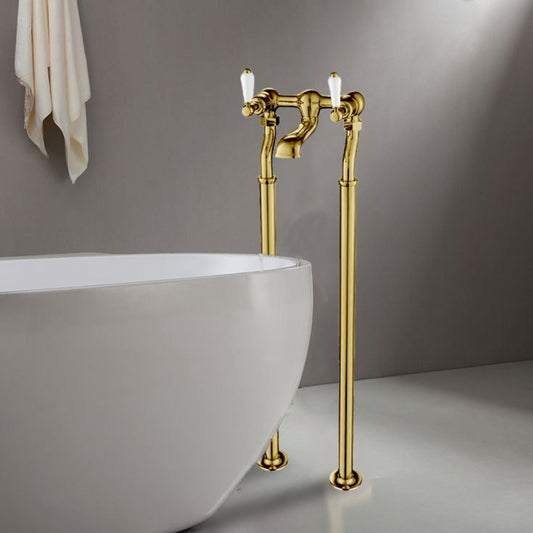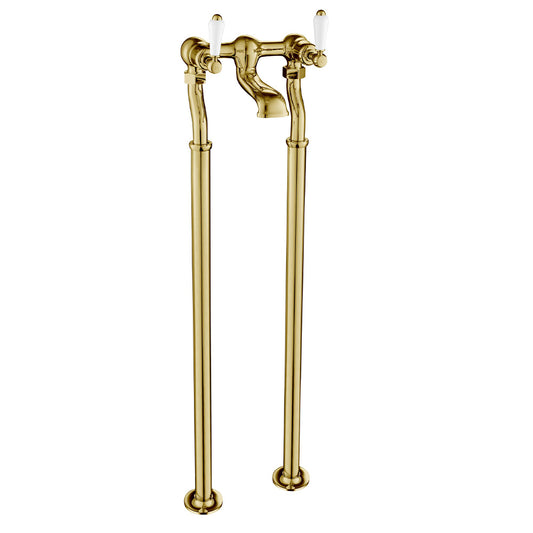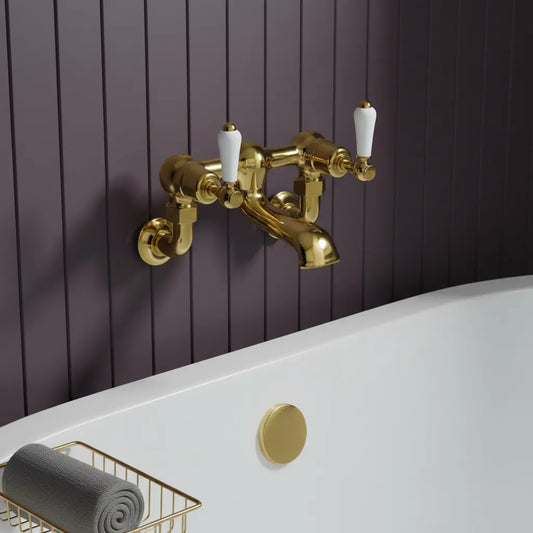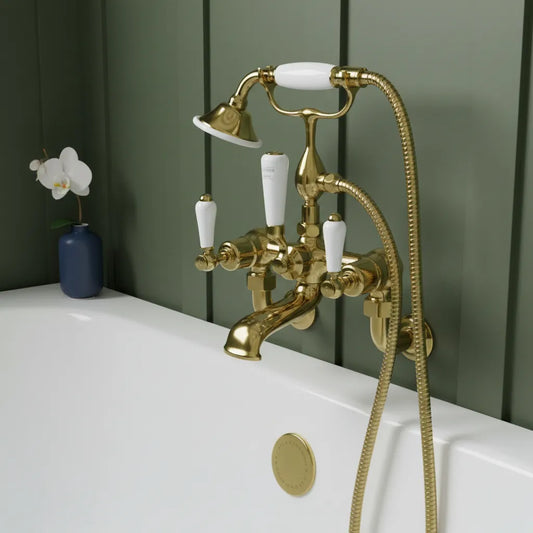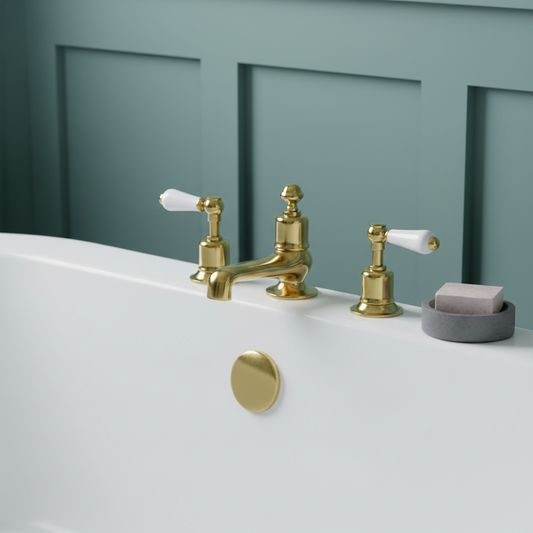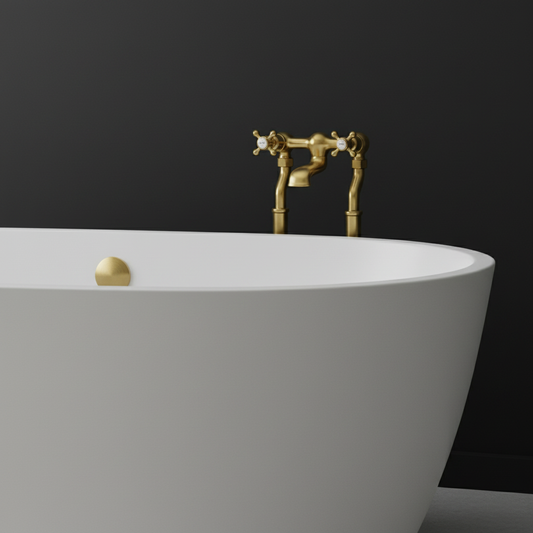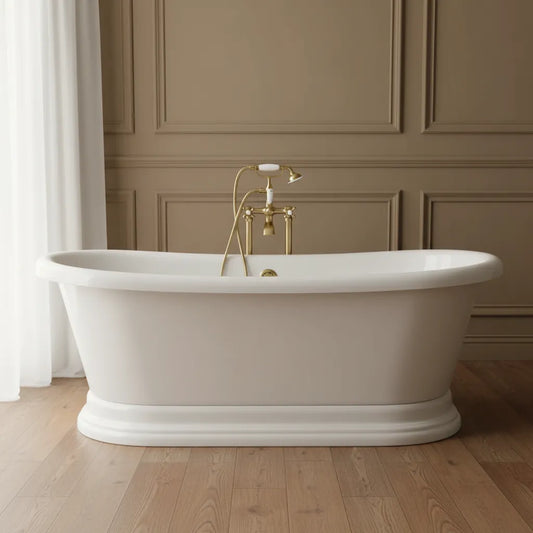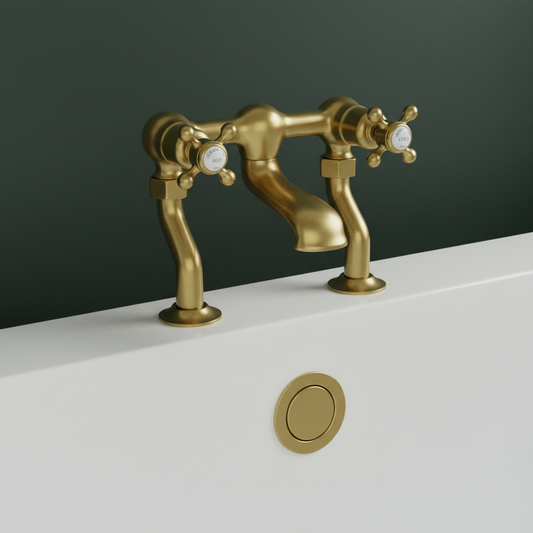Choosing the Perfect Bathroom Taps: A Comprehensive Guide to Style, Functionality, and More
Table Of Contents:
-
Introduction
→ -
Bathroom Taps Collection
→ -
Understanding Tap Styles
→ -
Types of Bathroom Taps
→ -
Functionality and Features
→ -
Material and Durability
→ -
Design and Aesthetics
→ -
Factors to Consider While Selecting the Right Bathroom Taps
→ -
Installation and Maintenance Tips
→ -
Conclusion
→
Introduction
Choosing the right bathroom taps is crucial for both functionality and aesthetics in your bathroom. Bathroom taps, often overlooked, play a pivotal role in the overall design and operation of your bathroom fixtures. They influence how efficiently you use water and contribute to the visual appeal of the space. The right choice of taps can enhance your bathroom’s design, improve user comfort, and ensure that the space remains practical and stylish. It’s important to consider both the functional aspects of the taps, such as ease of use and water efficiency, and their design to complement your bathroom’s decor. This guide aims to help you navigate the various options available, making it easier to select taps that meet your specific needs and preferences.
Understanding Tap Styles
Modern Taps:
Modern taps embody a sleek, minimalist design that perfectly complements contemporary bathrooms. These taps typically feature clean lines, geometric shapes, and smooth finishes, which contribute to a streamlined and uncluttered look. The emphasis on simplicity in modern taps aligns with the overall aesthetic of modern bathrooms, which prioritize functionality without compromising on style. Common finishes for modern taps include polished chrome, brushed nickel, and matte black. These materials not only enhance the tap's visual appeal but also contribute to its durability and ease of maintenance. Modern taps often incorporate advanced features such as touchless operation or single-handle controls, adding both convenience and sophistication to the bathroom experience.

In addition to their visual appeal, modern taps are designed to offer enhanced functionality. Features like temperature memory, water flow control, and easy-to-clean surfaces make these taps both practical and user-friendly. The integration of advanced technology, such as ceramic disc cartridges, ensures smooth and precise control over water flow and temperature. Modern taps are particularly suitable for bathrooms where a clean, contemporary look is desired, and their efficient design can contribute to water conservation efforts by incorporating flow restrictors or aerators. Overall, modern taps are a perfect choice for those looking to combine aesthetic elegance with cutting-edge functionality.
Traditional Taps:
Traditional taps evoke a sense of classic elegance and timeless charm, making them an ideal choice for vintage or period-style bathrooms. These taps often feature ornate details, such as cross handles or intricate lever designs, and are typically finished in materials like antique bronze or brass. The rich detailing and warm finishes of traditional taps complement other classic bathroom elements, such as clawfoot tubs or pedestal sinks, contributing to a cohesive and nostalgic ambiance. Traditional taps are not just about aesthetics; they also offer reliable performance with well-engineered mechanisms that provide precise control over water flow and temperature.
The appeal of traditional taps lies in their ability to create a sense of luxury and historical craftsmanship. These taps often include decorative elements and finishes that enhance the visual impact of the bathroom, making them a focal point in classic and elegant designs. Despite their vintage look, traditional taps can also incorporate modern technology to improve functionality, such as ceramic disc valves for smooth operation. Choosing traditional taps allows you to create a bathroom that feels both timeless and sophisticated, blending historical aesthetics with contemporary performance for a refined overall look.
Mixed Styles:
Mixed style taps offer a versatile option that blends modern functionality with traditional aesthetics, providing the best of both worlds. These taps often combine classic design elements, such as traditional lever handles, with contemporary materials like stainless steel or brushed nickel. This fusion allows homeowners to enjoy the visual appeal of traditional styles while benefiting from the advanced features and durability of modern technology. Mixed style taps are particularly suited for bathrooms that aim to achieve a unique and personalized look, balancing the elegance of the past with the convenience of modern innovations.
The advantage of mixed style taps lies in their ability to complement a variety of bathroom themes and decor styles. By integrating elements from both modern and traditional design, these taps can fit seamlessly into a wide range of settings, from transitional spaces to eclectic interiors. The combination of classic and contemporary features allows for a customized approach to bathroom design, enabling homeowners to express their personal style while enjoying practical benefits. Whether you prefer a subtle blend or a more pronounced juxtaposition of styles, mixed style taps offer flexibility and aesthetic diversity to suit diverse design preferences.

Types of Bathroom Taps
Single-Handle Taps:
Single-handle taps are renowned for their ease of use, as they control both water flow and temperature with a single lever. This design is particularly user-friendly, allowing for quick adjustments with one hand, which is ideal for busy or compact spaces. Single-handle taps often feature a swivel mechanism that lets users control water settings smoothly and intuitively. Their minimalist design aligns well with modern and contemporary bathroom aesthetics, contributing to a sleek and streamlined appearance. This type of tap is also practical for households where efficiency and convenience are key, making it a popular choice for many different bathroom settings.
The single-handle design also contributes to water conservation and efficiency. Many modern single-handle taps come equipped with features such as flow restrictors or aerators, which help reduce water usage without sacrificing performance. Additionally, the simplicity of single-handle taps makes them easier to clean and maintain, as there are fewer parts compared to double-handle designs. This ease of use and maintenance, combined with their stylish appearance, makes single-handle taps a practical and attractive choice for contemporary bathrooms.
Double-Handle Taps:
Double-handle taps are characterized by their separate controls for hot and cold water, allowing for precise temperature adjustments. Each handle operates independently, which can be preferred by those who enjoy a more traditional approach to managing water temperature. This type of tap provides a tactile and detailed method of control, making it easier to achieve the exact temperature desired. Double-handle taps often feature classic designs with ornamental details, making them a fitting choice for traditional and transitional bathroom styles where elegance and craftsmanship are valued.
In addition to their aesthetic appeal, double-handle taps offer the advantage of separate temperature controls, which can be beneficial in situations where precise adjustments are needed. The traditional design of these taps can also enhance the overall ambiance of a vintage or period-style bathroom. Although they may require more effort to operate compared to single-handle taps, double-handle taps provide a classic look and reliable performance that suits a range of bathroom designs. Their enduring popularity is a testament to their functionality and timeless charm.

Mixer Taps:
Mixer taps are designed to blend hot and cold water from a single spout, providing a consistent and adjustable water temperature. This type of tap is appreciated for its versatility and ease of use, as it eliminates the need for separate controls and allows users to achieve their desired temperature with a single lever or knob. Mixer taps are commonly found in both modern and traditional bathrooms, as they offer a practical solution for managing water temperature while maintaining a clean and streamlined appearance. Their integration of both hot and cold water in one unit simplifies the bathing experience and enhances user convenience.
Mixer taps are also designed with functionality in mind, often incorporating features such as ceramic disc cartridges for smooth operation and precise control. Many modern mixer taps include water-saving elements like flow restrictors, which help conserve water without compromising performance. The adaptability of mixer taps makes them suitable for a wide range of bathroom styles, and their combination of practicality and design flexibility ensures they remain a popular choice. Whether used in a contemporary or classic setting, mixer taps offer a reliable and efficient solution for managing water temperature and flow.
Wall-Mounted Taps:
Wall-mounted taps are installed directly on the wall above the basin, which helps to save countertop space and creates a sleek, modern look. This installation style is particularly useful in bathrooms with limited counter space or for those seeking a minimalist design. Wall-mounted taps also offer practical benefits, such as making it easier to clean the countertop area and showcasing the design of the basin. The installation requires precise plumbing work to ensure proper alignment and function, but the resulting clean look and space-saving advantages make it a worthwhile investment for modern bathroom designs.
The space-saving aspect of wall-mounted taps is complemented by their contemporary aesthetic, which can enhance the overall visual appeal of the bathroom. By mounting the taps on the wall, the clutter of traditional deck-mounted fittings is eliminated, creating a more open and streamlined appearance. Wall-mounted taps are available in various styles and finishes, allowing homeowners to choose options that best match their bathroom decor. This design flexibility, combined with practical benefits, makes wall-mounted taps a popular choice for those looking to achieve a modern and functional bathroom space.
Deck-Mounted Taps:
Deck-mounted taps are installed directly on the sink or countertop, offering a versatile and widely used option for many bathroom designs. This installation method is straightforward and allows for a range of styles and designs to be incorporated into the bathroom. Deck-mounted taps are often chosen for their ease of installation and accessibility, making them suitable for both traditional and modern bathroom settings. The variety of styles available, from classic to contemporary, ensures that deck-mounted taps can complement a wide range of bathroom themes and preferences.
The flexibility of deck-mounted taps extends to their compatibility with various sink types and countertop materials. Whether paired with a pedestal sink, a vessel sink, or a countertop-mounted basin, deck-mounted taps provide a reliable and functional solution for managing water flow. The installation process typically involves securing the taps to the deck or countertop surface, which simplifies maintenance and cleaning. Deck-mounted taps offer a balance of practicality and design versatility, making them a popular choice for many bathroom renovations and new installations.
Functionality and Features
Water Efficiency:
Water efficiency is a crucial aspect to consider when selecting bathroom taps. Modern taps often feature built-in flow restrictors or aerators designed to reduce water consumption without compromising water pressure. These devices mix air into the water stream, creating a fuller spray that feels like a higher flow rate but uses less water. By incorporating water-saving technology, these taps not only help conserve a vital resource but also contribute to lowering household water bills. This is particularly beneficial in areas experiencing water shortages or for those aiming to reduce their environmental footprint. When choosing taps, look for certifications or labels indicating water efficiency, such as those from WaterSense or other environmental standards, to ensure you are making an eco-friendly choice.
In addition to saving water, efficient taps can positively impact your overall bathroom experience. Taps equipped with water-saving features can help maintain consistent water pressure while using less water, which is both practical and economical. This efficiency does not compromise the quality of the water flow, as modern technology ensures that users still experience a satisfying and effective wash. Furthermore, integrating water-efficient taps into your bathroom can contribute to sustainable living practices and demonstrate a commitment to environmental responsibility, making it an important consideration for conscientious homeowners.
Ease of Use:
The ease of use of bathroom taps significantly impacts everyday interactions and overall convenience. Features such as ergonomic handles, smooth lever operation, and intuitive control mechanisms are designed to enhance user comfort and accessibility. Single-handle taps, for instance, are praised for their simplicity, allowing users to adjust both the temperature and water flow with one hand. This design is particularly beneficial in busy households or for those with limited mobility, as it minimizes the effort required to operate the tap. Easy-to-use taps can also improve safety, reducing the risk of accidentally scalding or freezing water by providing straightforward temperature adjustments.

For families with young children or elderly members, taps that offer user-friendly features can make daily routines more manageable. Consider options like touchless or sensor-operated taps, which eliminate the need for physical contact and thus reduce the spread of germs. Such taps are especially useful in maintaining high hygiene standards and preventing cross-contamination in shared bathrooms. Ensuring that the tap’s design aligns with the needs of all users will enhance convenience and safety, making it a critical factor when selecting bathroom fixtures.
Temperature Control:
Effective temperature control in bathroom taps is essential for ensuring a comfortable and safe experience. Taps equipped with advanced temperature control mechanisms, such as ceramic disc cartridges, offer smooth and precise adjustment of water temperature. These cartridges are known for their durability and ability to maintain a consistent temperature, which helps prevent sudden fluctuations that can lead to discomfort or even burns. The ability to set and maintain a stable water temperature not only enhances user comfort but also contributes to a safer bathing environment.
Additionally, some taps feature thermostatic valves that provide even greater control over water temperature. These valves automatically adjust the mix of hot and cold water to maintain a constant temperature, even if there are fluctuations in water pressure. This is particularly valuable in households where multiple fixtures are used simultaneously or in settings where consistent water temperature is crucial for comfort and safety. By selecting taps with reliable temperature control features, you can ensure a pleasant and secure bathroom experience for all users.
Material and Durability
Chrome:
Chrome is one of the most popular materials for bathroom taps due to its shiny, reflective finish and durability. Chrome-plated taps are highly regarded for their modern appearance, which complements a wide range of bathroom styles from contemporary to traditional. The chrome coating provides a sleek, polished look that enhances the aesthetic appeal of any bathroom fixture. Additionally, chrome is resistant to tarnishing and corrosion, making it a practical choice for high-moisture environments like bathrooms. The durability of chrome ensures that taps maintain their appearance over time with minimal wear and tear.
However, while chrome is durable and easy to clean, it does have some maintenance requirements. Chrome surfaces can show water spots and fingerprints, which may necessitate regular cleaning to keep the taps looking their best. To maintain the glossy finish, occasional wiping with a non-abrasive cleaner and a soft cloth is recommended. Despite these minor upkeep tasks, chrome remains a favored choice for its combination of style, resilience, and ease of maintenance, making it a reliable option for many bathroom designs.
Brushed Nickel:
Brushed nickel is a material known for its understated elegance and practical advantages. Unlike chrome, brushed nickel features a matte finish that resists fingerprints and water spots, making it easier to maintain a clean appearance. This finish provides a modern, sophisticated look that complements various bathroom styles, from contemporary to transitional. Brushed nickel’s resistance to tarnishing and corrosion adds to its appeal, ensuring that the taps remain functional and attractive even in humid bathroom environments.
In addition to its aesthetic benefits, brushed nickel is also valued for its durability. The material’s robust nature ensures that it withstands daily use and maintains its appearance over time. However, while it is less prone to showing smudges and spots compared to chrome, it still requires regular cleaning to prevent the buildup of soap scum and mineral deposits. Overall, brushed nickel offers a blend of modern aesthetics and practical durability, making it a popular choice for high-quality bathroom fixtures.
Bronze:
Bronze taps are chosen for their classic, rich appearance and durability. The material provides an antique or rustic look that enhances the charm of traditional or vintage-style bathrooms. Over time, bronze develops a unique patina that adds character and depth, contributing to its timeless appeal. However, the patina may require occasional polishing to maintain the desired appearance, as bronze can tarnish with exposure to moisture and other environmental factors. Regular maintenance is needed to preserve the finish and prevent excessive tarnishing.
Despite the higher maintenance requirements, bronze taps are highly durable and resistant to corrosion, making them suitable for long-term use. The robustness of bronze ensures that these taps withstand everyday wear and tear, providing reliable performance in high-use areas. For homeowners seeking a classic look combined with durability, bronze taps offer a distinctive choice that adds elegance and style to the bathroom. Proper care and maintenance will help retain their beauty and functionality over the years.
Design and Aesthetics
Matching with Bathroom Decor:
When selecting bathroom taps, it’s essential to consider how they fit with the overall decor of the space. The taps should complement other fixtures and design elements to achieve a cohesive and harmonious look. For example, if your bathroom features a modern design with sleek lines and minimalistic details, contemporary taps with clean, geometric shapes and finishes such as polished chrome or brushed nickel will enhance the modern aesthetic. Conversely, if your bathroom has a more traditional or vintage style, taps with ornate details and classic finishes like oil-rubbed bronze or antique brass can complement and elevate the room’s design.
Additionally, the design of the taps should integrate well with other elements such as the sink, countertop, and tiles. Consider the color scheme and material of these elements to ensure that the taps enhance or contrast appropriately. Properly matching taps with the bathroom decor not only improves the visual appeal of the space but also creates a unified and polished look. By paying attention to design details and choosing taps that align with the overall theme, you can enhance the aesthetic value of your bathroom and ensure that all elements work together seamlessly.
Color and Finish:
The color and finish of bathroom taps significantly influence their visual impact and overall integration with the bathroom design. Various finishes, such as polished chrome, brushed nickel, and oil-rubbed bronze, offer distinct looks and characteristics. Polished chrome provides a bright, reflective surface that adds a contemporary touch, while brushed nickel offers a more subtle, modern appearance with its matte finish. Oil-rubbed bronze, on the other hand, provides a rich, dark tone that adds a vintage or rustic feel to the space.
Choosing the right color and finish involves considering how the taps will interact with other bathroom elements, such as the sink, countertop, and surrounding tiles. Finishes that contrast with these elements can create a striking focal point, while those that blend harmoniously can enhance the overall design without overpowering other features. Additionally, consider how different finishes will affect the maintenance of the taps, as some may show water spots or fingerprints more readily than others. By carefully selecting the color and finish, you can achieve a balance between style and functionality, ensuring that the taps contribute positively to the bathroom’s aesthetic appeal.

Factors to Consider While Selecting the Right Bathroom Taps
Compatibility With Your Basin:
When choosing bathroom taps, ensuring compatibility with your basin is crucial for both functionality and aesthetics. Different basins require specific types of taps. For instance, a wall-mounted basin will necessitate wall-mounted taps, while a pedestal sink often pairs best with deck-mounted taps. The mounting style must align with your basin’s design to avoid installation issues or misalignment. Additionally, the spout height and reach of the tap should be appropriate for the size and shape of the basin to ensure comfortable use and prevent splashing.
Moreover, proper compatibility ensures that the tap’s installation does not compromise the basin's structural integrity. For example, a tap that is too high or has an incompatible spout reach can cause water to spill over the edges of a shallow basin. Therefore, measuring the dimensions of your basin and considering the tap’s specifications are essential steps in the selection process. Compatibility not only affects the practical aspects of use but also contributes to the overall harmony of your bathroom’s design.
Budget:
Balancing your budget with the features and quality of bathroom taps is a key consideration. Taps vary widely in price, with higher-end models often offering advanced features, better materials, and enhanced durability. While it might be tempting to opt for cheaper options, investing in high-quality taps can provide better long-term value. Quality taps generally have better construction and finish, which translates to improved performance and fewer maintenance issues.
Additionally, consider the long-term costs associated with your choice. High-quality taps might come with a higher upfront cost but could save money in the long run due to their durability and reduced need for repairs or replacements. Budgeting wisely involves evaluating the features that are most important to you—such as water-saving technology or ease of use—and finding a tap that offers the best balance between cost and functionality. This approach helps ensure that you get the best value for your investment while staying within your financial limits.
Installation Requirements:
The complexity of installing bathroom taps can vary significantly based on the type and design of the tap. Some taps, such as deck-mounted models, are relatively simple to install and might be suitable for DIY enthusiasts with basic plumbing skills. However, more complex installations, such as wall-mounted taps or those requiring modifications to existing plumbing, often benefit from professional expertise.
Professional installation ensures that taps are fitted correctly, minimizing the risk of leaks, misalignment, or other issues that could arise from improper installation. Plumbers can also address any necessary adjustments to plumbing lines or fixtures, ensuring a seamless integration with your bathroom setup. If you’re considering a DIY installation, make sure to carefully follow the manufacturer’s instructions and have all the necessary tools and components on hand. Proper installation not only affects the functionality of the taps but also their durability and overall performance.
Maintenance Needs:
Choosing taps that are easy to maintain can significantly impact their longevity and your overall satisfaction. Taps with finishes that resist staining, water spots, and tarnishing, such as chrome or brushed nickel, simplify the cleaning process and keep the taps looking new. Regular maintenance involves cleaning the taps with mild, non-abrasive cleaners and avoiding harsh chemicals that can damage the finish.
Additionally, periodic checks for common issues like leaks, drips, or reduced water pressure can help prevent more significant problems. Regularly inspecting the tap’s components, such as the aerator or cartridge, and replacing worn parts as needed ensures that the tap functions smoothly and efficiently. Easy maintenance not only preserves the appearance of your taps but also enhances their performance and extends their lifespan.
User Needs:
Considering the needs of all users in your household when selecting bathroom taps ensures that they are functional and accessible for everyone. Features such as lever handles or touchless operation can enhance usability, particularly for children or elderly family members. Lever handles, for example, are easier to operate than traditional cross handles, making them a practical choice for households with young children or individuals with limited dexterity.
For added convenience, touchless taps offer hands-free operation, which can improve hygiene and ease of use. Evaluate the specific needs of your household members and choose taps that provide a user-friendly experience. By considering user needs, you ensure that the taps you select will meet practical requirements and enhance the overall functionality of your bathroom.

Installation and Maintenance Tips
Professional Installation:
Opting for professional installation is often advisable for more complex tap systems or when installing high-end models. Professional plumbers have the expertise to handle intricate installations, such as wall-mounted taps or taps requiring modifications to existing plumbing. Their experience ensures that the taps are installed correctly, minimizing the risk of issues such as leaks, improper alignment, or damage to surrounding fixtures.
A plumber can also address any unexpected complications that may arise during installation, such as adjustments to plumbing lines or ensuring that all components are compatible. Investing in professional installation not only guarantees a properly functioning tap but also provides peace of mind knowing that the installation has been completed to industry standards. For complex setups, professional assistance can save time and prevent costly mistakes.
DIY Installation:
For those comfortable with basic plumbing tasks, DIY installation can be a viable option for simpler tap replacements. Basic steps include turning off the water supply, removing the old taps, and following the manufacturer’s instructions to install the new ones. Essential tools for DIY installation typically include an adjustable wrench, a screwdriver, and plumber’s tape to ensure watertight connections.
Before beginning, thoroughly read the installation manual and familiarize yourself with the process. Accurate measurements and careful alignment are crucial to avoid issues such as leaks or improper function. If difficulties arise or if you are unsure about any aspect of the installation, seeking advice from a professional or consulting additional resources can help ensure a successful DIY project.
Regular Maintenance:
Maintaining your bathroom taps involves routine cleaning and inspections to keep them in good working order. Regularly clean the taps with a mild detergent and soft cloth to remove mineral deposits and prevent staining. Avoid using abrasive cleaners or scrubbing tools that could damage the tap’s finish. Keeping the taps clean not only preserves their appearance but also ensures smooth operation.
Periodic inspections are also important for identifying issues such as leaks or reduced water flow. Address any problems promptly to avoid potential water damage or increased utility costs. Regular maintenance includes checking components like the aerator or cartridge for wear and replacing them as necessary. By following these maintenance practices, you can extend the lifespan of your taps and ensure their continued performance and functionality.
Conclusion
Choosing the perfect bathroom taps involves balancing style, functionality, and practical considerations. By understanding the various styles and types of taps, considering material options, and evaluating factors such as compatibility and budget, you can make an informed decision that enhances your bathroom’s aesthetics and functionality. Whether you prefer modern sleekness or traditional charm, the right taps will contribute to a well-designed and efficient bathroom. Take the time to assess your needs and preferences, and choose taps that offer both practical benefits and visual appeal.


